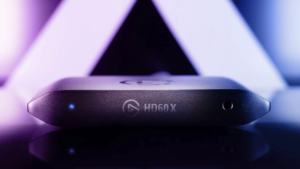The Outer Worlds Most Important Graphics Options – Every Setting Benchmarked

System Requirements
Low vs Ultra Screenshots
GPU Performance Chart
CPU List That Meet System Requirements
GPU List That Meet System Requirements
Comments
The Outer Worlds
PC Demand
#100+
Rate this game
User Rating
8.21
Ok
Not Ok
Optimisation
7.2
Obsidian probably couldn’t have planned The Outer Worlds timing any better. While Bethesda cocks up at every available opportunity, along comes the Fallout: New Vegas developers to show us exactly how a sci-fi RPG should be done. The Outer Worlds has been earning rave reviews and it could be played on PC for as little as $1 through Xbox Game Pass for PC.
Here’s every advanced graphics setting found in The Outer Worlds PC (not to be confused with Outer Wilds), benchmarked and tested for their Frames Per Second performance hit. Using the chart below you can find out just how demanding each setting is. Along with this, we’ve given priority scores based on how important we believe it is to enable these graphics options, or how important they are to keep an eye on.
The Outer Worlds System Requirements
For the benchmark results below we used a PNY GeForce RTX 2060 6GB, an Intel Core i7-5820K processor clocked @ 4.2 GHz, and 16GB DDR4 memory.
The Outer Worlds Graphics Options Performance Breakdown
The further right the bar goes, the more demanding the graphics option is when switching from Low to Ultra, or whichever equivalent is used for that graphics setting. You’ll note there aren’t a huge amount of graphics options to tweak at all in The Outer Worlds, with Shadows and Resolution the big ones for those looking to gain a few frames.

The Outer Worlds Graphics Settings
The Outer Worlds comes with a very limited range of graphics settings to tweak. If you’re struggling with performance then you’re going to have to choose carefully which of these settings you’re going to sacrifice. We’ve provided both a score for the performance hit as well as a priority score designed to recommend which graphics settings you prioritise turning up (the higher the number, the better).
3D Resolution
Don’t be fooled by the performance hit. By default, 3D Resolution is set to 100%, meaning it renders at 100% of your selected resolution. Lower the percentage and The Outer Worlds will render at a proportionately lower resolution. The performance gains are therefore inversely related to the percentage you set. Trim the resolution down to 33% and we notice performance gains of around 63%, at a dramatic cost to render resolution. For people with great hardware this graphics settings is unimportant. Just leave it at 100% and select your desire screen resolution.
However, the benefit for users with lower-end hardware is 3D Resolution only affects the resolution of non-UI elements. For example, if you have a 1080p display you could run The Outer Worlds at 1080p screen resolution and benefit from a crisp, clear UI. You could then lower the 3D resolution to render the game itself at 720p while maintaining the quality of the UI. It’s certainly something to mess around with if your PC or laptop monitor is capable of a higher resolution than you can actually play The Outer Worlds at.
Performance Impact – 5/5
Priority – 5/5
Motion Blur
Love it or hate it, Motion Blur is a graphics setting mainstay. This setting applies a blur effect to fast moving objects. It does carry a minor performance hit, however, so we can take it or leave it.
Performance Impact – 2/5
Priority – 1/5
Screen Effects
This is a catch-all term for The Outer Worlds’ post-processing effects. This includes blood spatter and other decals, light flares, chromatic aberration, and more.
Performance Impact – 3/5
Priority – 2/5
View Distance
Quite simply this adjusts how far away objects are rendered in The Outer Worlds. Unfortunately, this setting is also the game’s weak point. Even on Ultra, the view distance is simply too short and objects such as rocks and vegetation visibly pop-in a lot. We’ve messed around with the config files and there doesn’t appear to be a solution but for now you’re going to want to get this setting up as high as possible.
Performance Impact – 0/5
Priority – 5/5
Shadows
This graphics setting impacts the render resolution of the shadows in The Outer Worlds. The higher the setting, the more detailed the shadows cast by objects. The Outer World gets by on its fantastic art-style though; even on Ultra the shadows aren’t particularly impressive.
Performance Impact – 4/5
Priority – 3/5
Textures
Adjusts the quality of surface textures on objects in The Outer Worlds. I messed around with this graphics setting a lot, rebooted the game multiple times, and I’m still entirely sure I could discern any notable difference between low and ultra. Whatever the case, this graphics setting is heavily reliant on your available VRAM. If you have enough, there should be very little impact on frame rates.
Performance Impact – 1/5
Priority – 1/5
Visual Effects
This setting adjusts the visual effect and particle effect quality on things like explosions, bullets, and lasers. It’s hard to pin down a priority on this as it’s only noticeable when the proverbial poop hits the fan, at which point you’ve usually got other things to worry about.
Performance Impact – 3/5
Priority – 2/5







